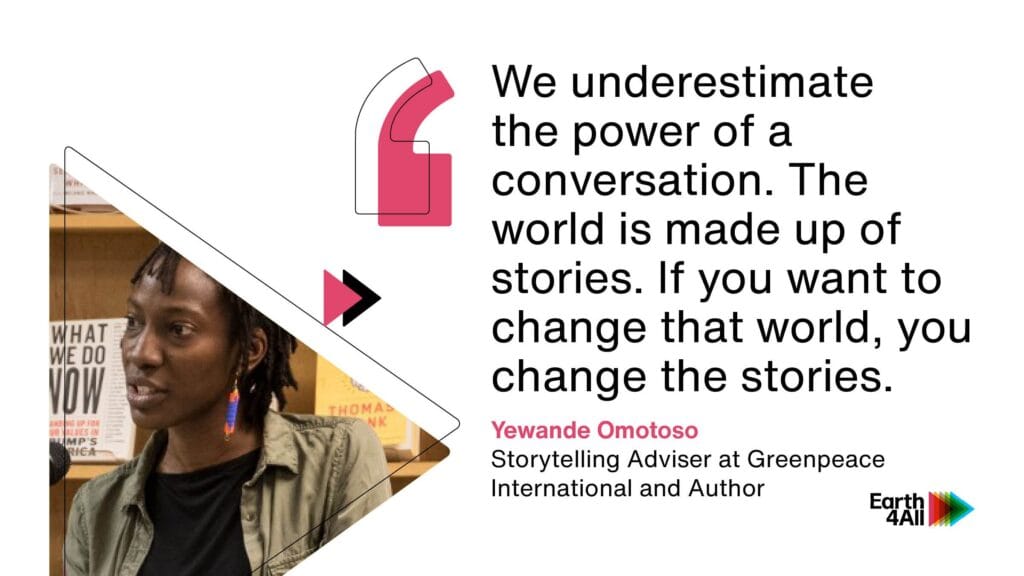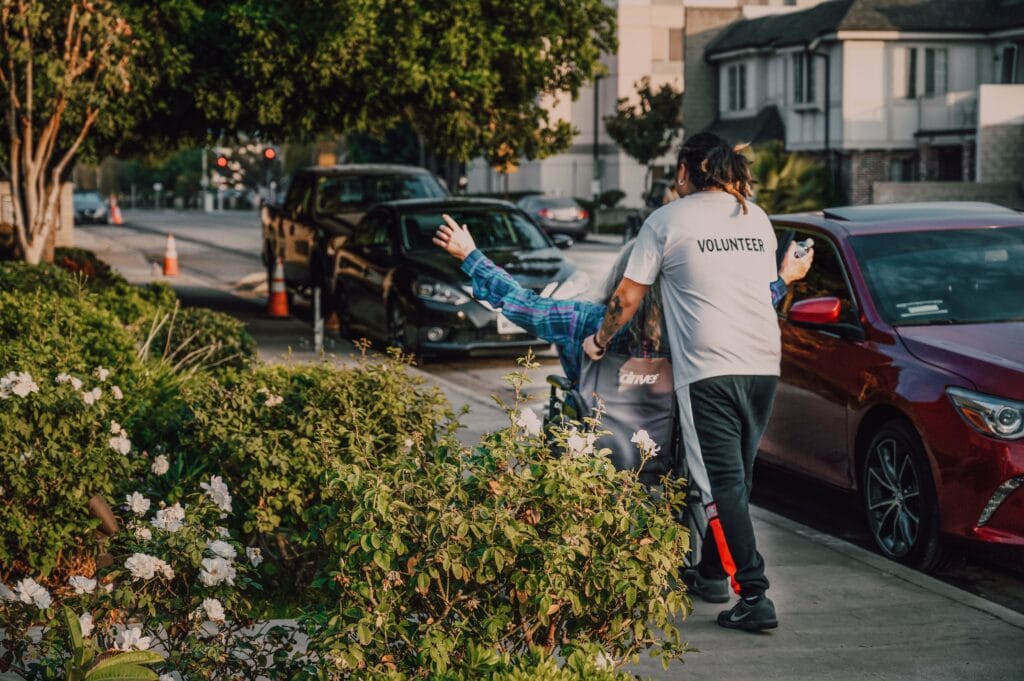
You currently work on a Greenpeace project called ‘Alternative Futures’. What is it about?
It is very important to put on loudspeaker what is wrong in the world and to point out the purveyors of those wrong ways. Past projects at Greenpeace focused on drawing a lot of attention to that, however Alternative Futures is different.
Alternative Futures recognises that many things that are wrong in the world and a lot the challenges we face, are interwoven. Our environmental challenges are interwoven with challenges in society like inequality, the domination of certain monetary and economic systems. Life exists in a web in which everything is tightly woven. We can’t just try to solve climate deregulation and ignore gender inequality, for instance. Alternative Futures recognises this network of issues and asks: what are other ways to do things? And just like in Earth4All, proposes solutions – many already in existence – to these systemic problems.
There are other possibilities for organising society, and these can be found mostly in grassroots and indigenous communities, which have been ignored, silenced or disregarded. Alternative Futures looks to amplify these solutions to bring them to the attention of the world.
One piece of work we did was to create a living document which records principles and proposals for alternative ways of organising societies around wellbeing, connectivism, etc. It’s a very pluralistic document, with different ideas and concepts drawing on existing knowledge and examples.
How can these stories and examples of alternatives bring about concrete change?
One way the status quo prevails is that we forget to dream and to envision – even though that is where change begins. Our dreams so easily get co-opted by capitalism and other “ideals” that have taken over society – we can’t see beyond them.
Sometimes, people discredit new ideas for being ‘too fluffy’. Part of our jobs as storytellers is to remind people to dream and to envision the future, but also to believe that these dreams and vision can be implemented.
The stories within Alternative Futures explore the tensions between dreaming about the future, and the very concrete, already existing ideas of the living document. We want to contribute to sparking conversations. A story is a conversation, and we want people telling and sharing stories, wondering and puzzling.
Do we underestimate the importance of discussing the world?
We underestimate the power of a conversation. The world is made up of stories. Something I’ve learnt through Greenpeace storytelling is that if you want to change that world, you change the stories.
Look at #MeToo, for example – a seemingly very simple statement, that still contained a theory of change.
In 2006 Tarana Burke founded the Me Too Movement to raise awareness about the extent of gender-based violence and harassment in society. 10 years later Alyssa Milano shared a tweet requesting women respond “Me Too” if they’d experience sexual violence and harassment.
Burke’s movement took something quiet and exposed its prevalence.
It was a very simple call to action, but it took a lot of courage for the first few people to reply with their experiences. The results are powerful. Whether in the public discourse or in the legislation, the conversation around the hashtag brought about concrete change.
Black Lives Matter is another example of the power of storytelling, this time through the action of naming. Black Lives Matter isn’t a demand, it’s an assertion of something that isn’t the case at the moment. It is bringing global attention to an issue that in many instances goes unnamed – the devaluing of black lives and bodies.
There are many other examples: the naming of colonialism and of the legacy of the Atlantic slave trade and the impact that these things have had on our economies.
How do we go from a conversation to a movement?
A key thing is to recognise the importance of being humble and acknowledging that we don’t know every piece. It is great that we are seeing these things, but we, as Alternative Futures, must recognise the amount of work that’s been done already and then assess what we are uniquely positioned to offer. So connecting with allies and building alliances is crucial and a huge focus of the work.
We work with other organisations around the world, who in some ways are the ambassadors of the stories we share. We also work with artists who are the ambassadors of culture, since future and culture are tightly connected.
We can’t divide and conquer in a connected world and a woven system. We have to connect and collaborate, and then we’ll change the world.



